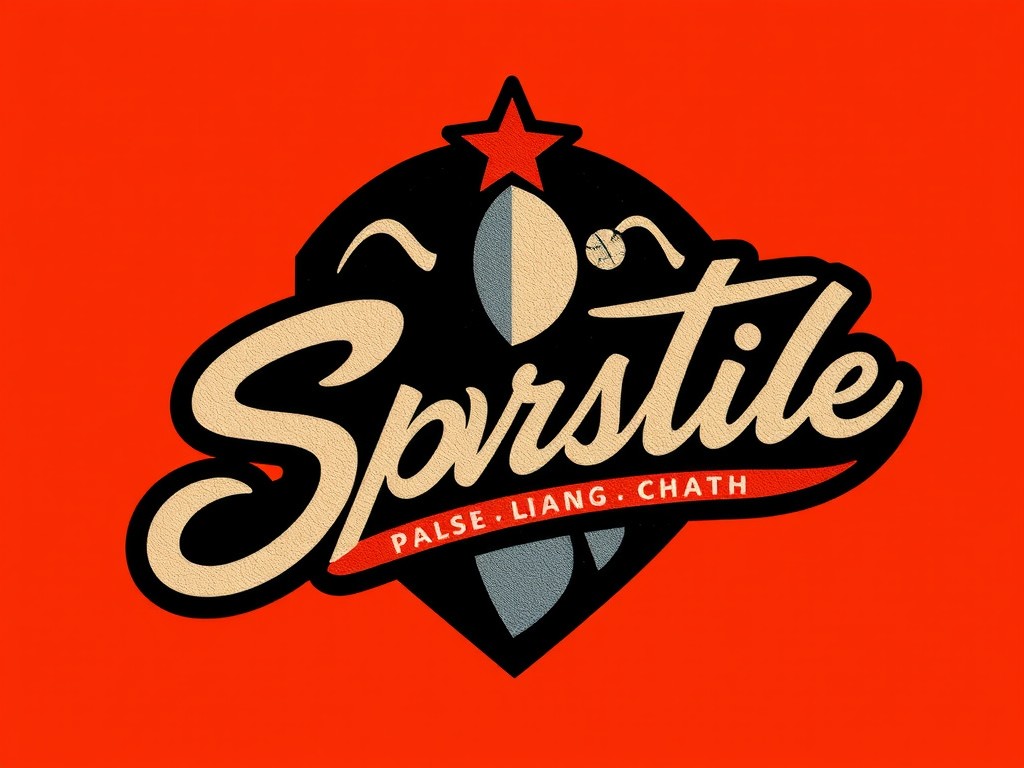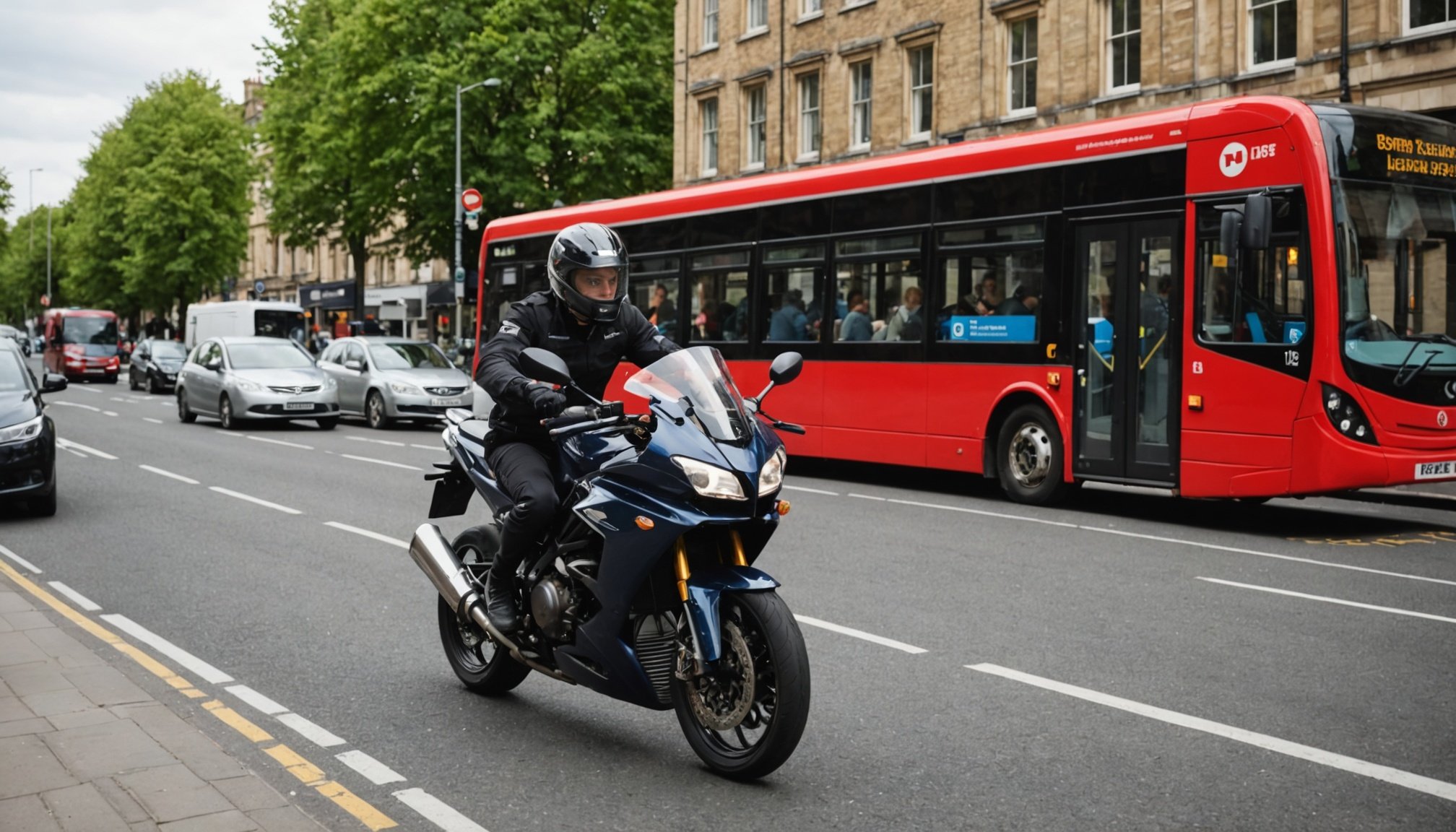Navigating Bus Lanes on Sport Bikes: A Guide to UK Legal Regulations
Understanding Bus Lanes: The Basics
When it comes to navigating the roads on your sport bike, understanding the rules and regulations surrounding bus lanes is crucial to avoid fines and ensure safe driving. Bus lanes are designated lanes on roads that are reserved for buses, and sometimes other specified vehicles, during certain times of the day.
Why Bus Lanes Exist
Bus lanes are introduced to improve the efficiency of public transportation and reduce traffic congestion. They are typically marked with blue signs indicating the times of operation, and these signs are your key to knowing when you can and cannot use these lanes.
Also read : Ultimate Guide to Effective Cleaning and Maintenance of Sport Bike Chains in UK”s Salty Winter Environment
Who Can Use Bus Lanes?
While the primary users of bus lanes are buses, other vehicles may also be permitted depending on the specific lane. Here are some common vehicles that might be allowed:
- Licensed London Taxis (Hackney carriages)
- Motorcycles (without side cars)
- Mopeds
- Scooters
- Tricycles (non-motorised, motorised under 450kg, not with side cars)
- Bicycles
It’s essential to check the signs on the bus lane to see which other road users are permitted.
Also to read : Discover the 5 Best Lightweight Helmets for Sport Bike Enthusiasts in the UK
When Can You Use a Bus Lane?
The use of bus lanes is strictly regulated by the times of operation displayed on the signs. Here’s a breakdown of when you might be able to use a bus lane on your sport bike:
Operational Hours
During the operational hours specified on the sign, only authorized vehicles are allowed to use the bus lane. For example, if the sign says “Monday to Friday, 7:30 AM – 9:30 AM and 3:30 PM – 6:30 PM,” you must avoid using the lane during these times unless you are an authorized vehicle.
Outside Operational Hours
If you are driving outside the operational hours, you can use the bus lane as long as it is safe to do so. This can help ease traffic congestion and free up another lane for other vehicles. However, always ensure you are not violating any other traffic rules or signs.
Penalties for Misusing Bus Lanes
Misusing bus lanes can result in significant penalties, which vary depending on the location.
Penalty Charge Notice (PCN)
If you are caught using a bus lane during operational hours, you will receive a Penalty Charge Notice (PCN). Here is a breakdown of the typical fines:
| Location | Full Fine | If Paid Within 14 Days |
|---|---|---|
| Inside Greater London | £160 | £80 |
| Outside Greater London | £65 | £30 |
These fines are enforced through CCTV cameras that monitor bus lanes, and the PCN will include details of the contravention, vehicle information, and photographic evidence.
Practical Tips for Using Bus Lanes Safely
Here are some practical tips to help you navigate bus lanes safely and legally:
- Check the Signs: Always check the blue signs indicating the times of operation and which vehicles are permitted.
- Be Aware of Your Surroundings: Keep an eye on other road users, including buses, cyclists, and pedestrians.
- Use Bus Lanes Wisely: If you are allowed to use the bus lane outside operational hours, do so to ease traffic congestion but always follow other traffic rules.
- Avoid Distractions: Do not get distracted by other street furniture or signs; keep your focus on the road and the bus lane signs.
Real-Life Scenarios and Anecdotes
Understanding the rules through real-life scenarios can make them more relatable and memorable.
Example: Busy City Centers
In central London or other busy city centers, the complexity of traffic, cyclists, pedestrians, and various street signs can be overwhelming. It is crucial to stay focused and avoid using bus lanes during operational hours to avoid fines and ensure safety. As one driver noted on a forum, “In a town I’m familiar with, I happily use the bus lane. In central London, I’m not risking it. There’s enough going on with other traffic, cyclists, pedestrians and just general navigation that demands my attention without having to find a tiny blue sign in amongst all the other street furniture”.
Example: Changing Signs
Bus lane signs can change at short notice, and it’s easy to get caught out. For instance, a driver mentioned a bus lane near them that has different restrictions for different sections: “The first (larger) part is Buses only between 7am and 10am during rush hour. However, the smaller section after the junction (literally 200 yards) is Buses Only at any time. So many get caught out by this especially if they are intending to turn left at the next junction just after the bus lane ends”.
Additional Road Users and Their Interactions with Bus Lanes
Bus lanes are not just about buses and motorcycles; other road users also need to be aware of these lanes.
Cyclists
Cyclists are often permitted to use bus lanes, and they must be aware of the same rules as other vehicles. However, cyclists also have dedicated cycle lanes that are designed to keep them safe. For example, in Scotland, there are extensive cycle networks, including segregated cycle lanes and shared-use paths, which help reduce interactions with high-speed traffic.
Horse Riders
While horse riders are not typically allowed in bus lanes, they need to be aware of the traffic flow and road markings. Horse riders should use designated horse riding paths or quiet roads to ensure their safety and the safety of other road users.
The Role of Technology and Enforcement
Technology plays a significant role in enforcing bus lane regulations.
CCTV Cameras
CCTV cameras are increasingly used to monitor bus lanes and issue penalty charge notices to unauthorised vehicles. These cameras record any contraventions and provide photographic evidence, making it easier for authorities to enforce the rules.
Public Awareness and Education
Public awareness campaigns are crucial in educating drivers about the importance of following bus lane regulations. Local authorities should continue to implement effective enforcement measures and invest in public awareness campaigns to promote responsible driving habits. As emphasized in the context of illegal parking, “Drivers must understand the importance of parking legally and consider the safety of others. They should familiarize themselves with parking regulations, avoid parking in restricted areas, and respect the needs of pedestrians, cyclists, and emergency services”.
Navigating bus lanes on your sport bike in the UK requires a clear understanding of the legal regulations and a keen eye for the signs and rules. By following these guidelines, you can avoid fines, ensure your safety, and contribute to smoother traffic flow.
Here is a summary of the key points:
- Check the signs for operational hours and permitted vehicles.
- Use bus lanes wisely outside operational hours to ease traffic congestion.
- Be aware of your surroundings to avoid distractions and ensure safety.
- Understand the penalties for misusing bus lanes to avoid fines.
- Respect other road users, including cyclists, pedestrians, and horse riders.
By adhering to these rules and being mindful of the road environment, you can enjoy a safe and efficient ride on your sport bike while navigating through the UK’s busy roads.
Frequently Asked Questions
Can I use a bus lane on my sport bike during operational hours?
No, you cannot use a bus lane during operational hours unless you are an authorized vehicle. This is strictly regulated by the signs indicating the times of operation.
What happens if I get caught using a bus lane during operational hours?
You will receive a Penalty Charge Notice (PCN) with a fine that varies depending on the location. For example, in Greater London, the fine is £160, reducible to £80 if paid within 14 days.
Can cyclists use bus lanes?
Yes, cyclists are often permitted to use bus lanes, but they must follow the same rules as other vehicles regarding operational hours.
How are bus lane regulations enforced?
Bus lane regulations are enforced through CCTV cameras that monitor the lanes and issue penalty charge notices to unauthorised vehicles. Local authorities also conduct regular patrols to enforce these rules.











